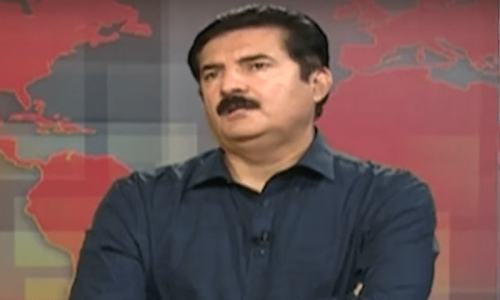KARACHI: A report prepared by the Sindh Bureau of Statistics and to be launched soon gives disturbing figures about the children’s mortality rates in the province, which have increased since 2012 while similar figures in Punjab have appreciably decreased.
“It is an indictment on the health sector in Sindh — of which public sector shares the maximum — in that it shows poor results in achieving millennium development goals (MDGs),” said an official quoting a part of the report titled ‘Dying children of Sindh (Pakistan) and SDGs (sustainable development goals).
It said the multiple indicators cluster survey (MICS) 2014 showed an increase in the infant mortality rate (IMR) and under five mortality rate (U5MR).
The report quoted the demographic and health survey (DHS) and the MICS of the past, which shows that Sindh’s infant mortality rate was 81 in 1991 when Pakistan’s was 91 and Punjab’s was 104. Ironically, after 23 years in 2014, Sindh’s infant mortality rate increased a bit with 82 while Punjab’s decreased to 76.
The previous figures were based on the 2012 health survey when Sindh’s infant mortality rate was 74, as was the national aggregate, while Punjab’s figures were a whopping 88.
The graphs given in the report show the infant mortality rate of both the provinces intersecting each other by the end of 2013 and within months Punjab improved its performance, while Sindh’s figures deteriorated to unacceptable levels.
Similarly, Sindh had under five mortality rate of 106 in 1991, better than the national aggregate of 117 and Punjab’s 133. By the end of 2014, Sindh’s under five mortality rate slid just a bit and remained 104 against Punjab’s 96.
According to 2012 health survey, Pakistan’s under five mortality rate was 89 while Sindh’s was 93 and 105. In 2014 both the provinces almost reversed their figures.
The report asked tough questions, which it wanted to be answered. The foremost of them was why the children dying in the province with increasing trends while in other provinces the same was decreasing.
Officials said during the course of the survey they received tough stances from various segments of civil society who said the government in Sindh should face accountability and answer what it had delivered during its eight-year rule when more children were dying of preventable deaths.
The rights groups, said sources, also wanted to know where billions of rupees budgeted for the healthcare of Sindh had gone into, as even today the out of pocket expenses of a common man on health were 78 per cent.
They said only 45pc of the population had access to any healthcare services in the province and medicines accounted for 53pc of out of pocket expenditure, which was the highest in the country.
The report received feedback from independent individuals and groups saying that on any given day an average of 30pc to 40pc of healthcare providers were absent from their public practice locations and there was chronic shortage of all categories of female staff and specialists in rural districts (30-73pc at rural and per-urban areas).
They said that over Rs10 billion had already gone into the rehabilitation of taluka headquarters (THQs) hospitals or district headquarters (DHQs) hospitals since 2007 and asked whether they were still functioning now and what had they improved in terms of access, quality and equity of care.
Similarly, they advised people to ask where over Rs10 billion spent on the procurement of medicines had gone and did the health department in Sindh have any direction or policy to combat such alarming indicators.
The report also showed that children had not been adequately covered through immunisation as their birthright given the coverage in Sindh was less than what was in Punjab and Khyber Pakhtunkhwa.
It referred to the 2012 health survey figures showing Punjab with better indicators in immunisation of children, which was 65.5pc, followed by Khyber Pakhtunkhwa with 52.7pc, Gilgit-Baltistan (47pc), Islamabad (73pc), Sindh (29.1pc) and Balochistan (16.4pc).
Published in Dawn, October 8th , 2015
On a mobile phone? Get the Dawn Mobile App: Apple Store | Google Play














































